The prime rib 500 rule method is an easy way to cook a small prime rib roast to the perfect medium rare with a tender and juicy center and beautiful crust. Learn how to prepare this delicious roast for your Christmas or holiday gathering!
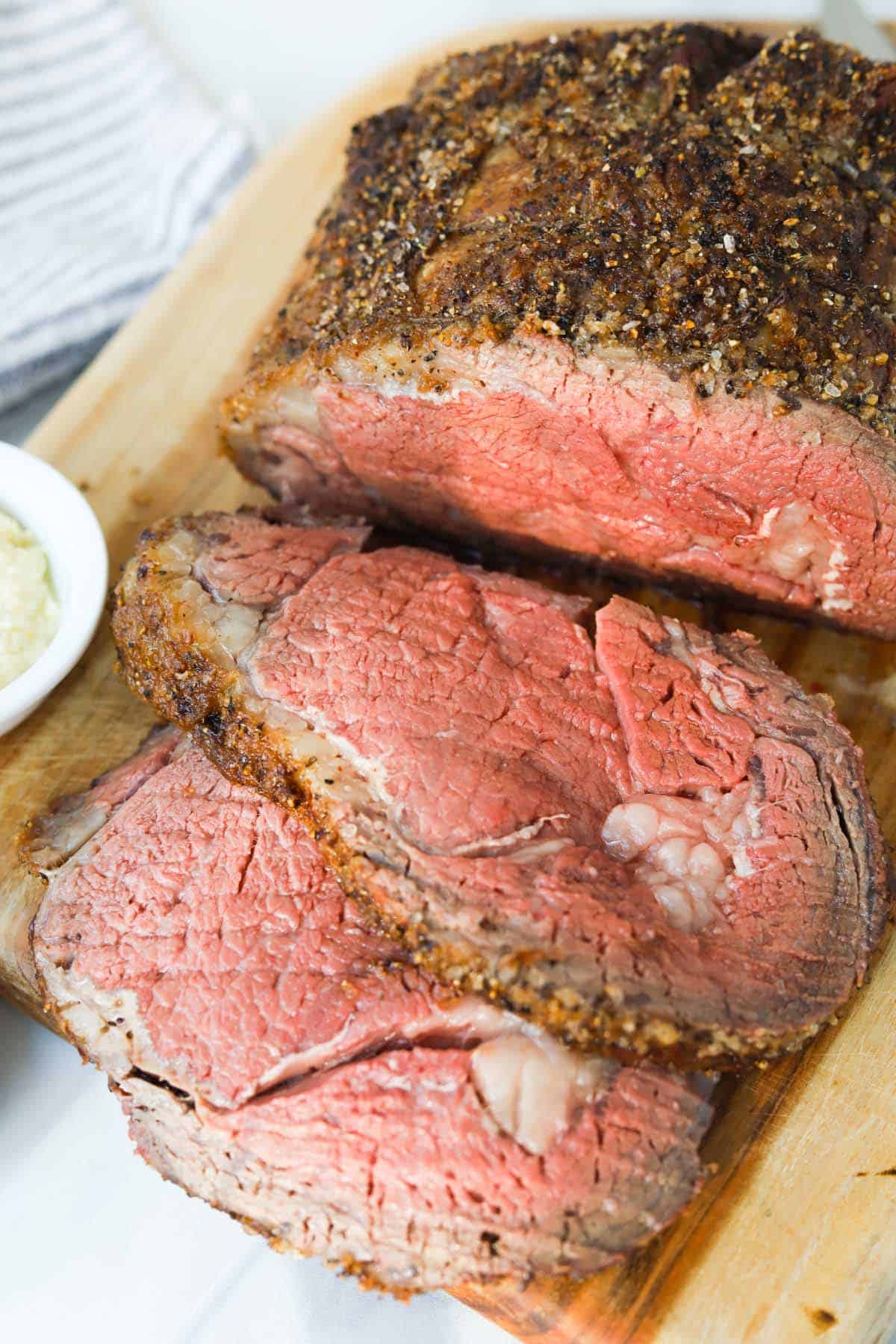
Jump to:
- What is the Prime Rib 500 Rule?
- The Close Oven Method is Recommended Ror:
- How to calculate the Prime Rib 500 Rule
- Prime Rib 500 Rule Calculator
- Ingredients
- Equipment
- Instructions
- Rib Roast Doneness & Temperature Guide
- Tips for a perfectly cooked small prime rib
- What to serve with a small rib roast
- Frequently Asked Questions
- More Holiday recipes to try
- Prime Rib 500 Rule Recipe: Perfect for Small Roasts
What is the Prime Rib 500 Rule?
The Prime Rib 500 F Rule is a cooking method to cook a rib roast to a perfect medium rare. It is a simple calculated formula that starts the roast at 500 F, effectively “searing” it at high heat to develop a rich, flavorful crust. The oven is then turned off, allowing the roast to continue cooking with residual heat - no peeking, until it reaches the desired medium-rare doneness.
The Close Oven Method is Recommended Ror:
Boneless, Small Rib Roasts (4 to 7 lbs): Bone-in roasts don’t cook as evenly with this technique, as the meat near the bone tends to remain rare. Purchase a boneless rib roast or ask your butcher to remove the bones. You may also debone the roast yourself.
Medium-Rare Roasts: This technique is ideal for achieving medium-rare doneness. If you prefer medium or well-done meat, this method is not suitable.
Ovens Without Cooling Fans: It’s crucial that your oven doesn’t have an internal cooling fan. A cooling fan causes the oven to lose heat too quickly, preventing proper cooking. If your oven does have a cooling fan and you still want to try this method, here are your some workarounds:
Workaround 1: Instead of turning the oven off, set it to the lowest possible temperature for the next two hours.
Workaround 2: Turn off the oven’s power at the breaker after completing the active roasting time.
How to calculate the Prime Rib 500 Rule
To determine the "active" roasting time (the time you'll roast the meat at 500°F), simply multiply the weight of your roast (in pounds) by 5 minutes.
Example:
- 4 lb roast → 4 × 5 = 20 minutes
- 4.5 lb roast → 4.5 × 5 = 22.5 →23 minutes (round up).
This calculation ensures precise roasting for a perfect medium-rare result.
For half pound calculations, cooking time is rounded up.
👉 Use a kitchen scale for accuracy.
Prime Rib 500 Rule Calculator
Prime Rib 500°F Rule Calculator
Enter roast weight to get the active roasting time at 500°F. We round up to the nearest minute.
💡 Tip: Weigh your roast at home for best accuracy. Carryover heat finishes the roast during the no-peek phase.
Ingredients
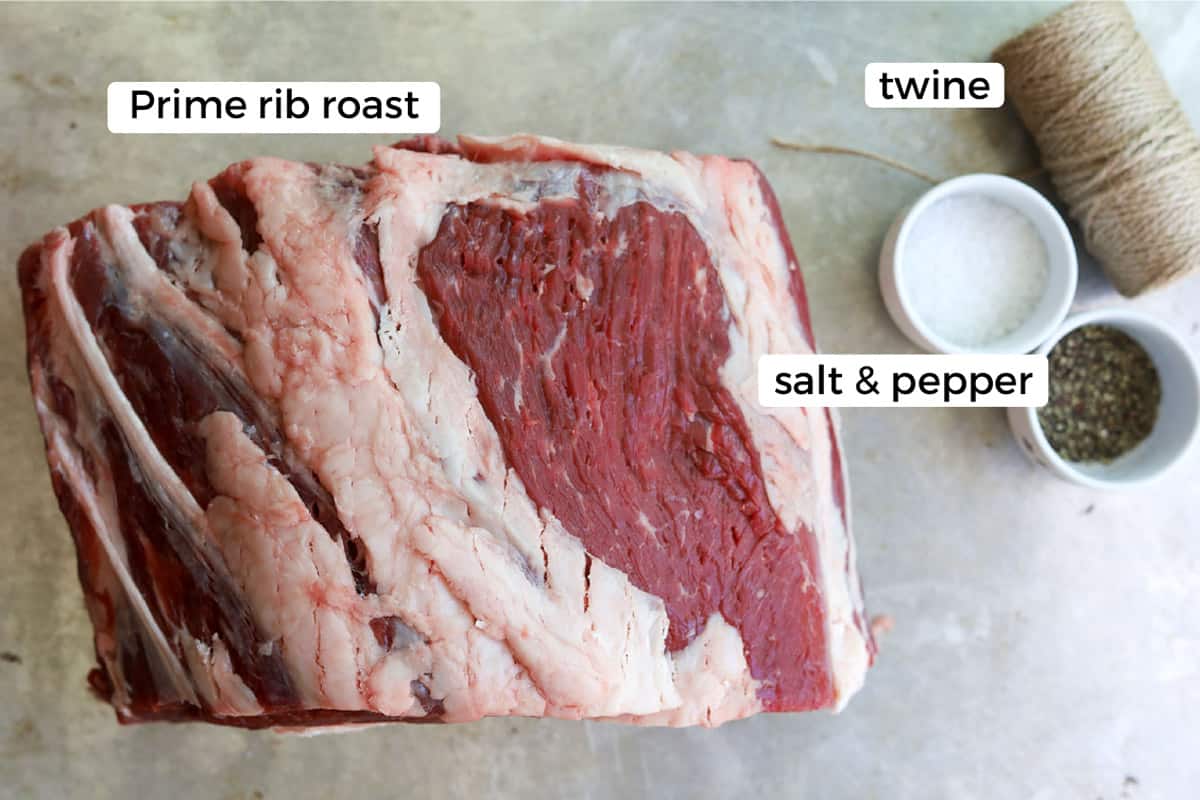
Small Boneless Rib Roast - I’m using a 4-pound roast, but this method works well for roasts between 4 to 7 pounds.
Coarse Kosher Salt & Cracked Pepper - Use coarse kosher salt to create a flavorful crust. Avoid fine table salt, as it can make the roast overly salty.
Equipment
Baking Rack - A baking rack is highly recommended for even cooking and to ensure a crisp crust on the bottom of the roast.
Timer -Keep a close watch on roasting time to ensure accuracy.
Kitchen twine - Use twine to tie the roast into a uniform shape for even cooking.
Meat thermometer - use an Instant-Read Thermometer for precise internal temperature readings.
Instructions
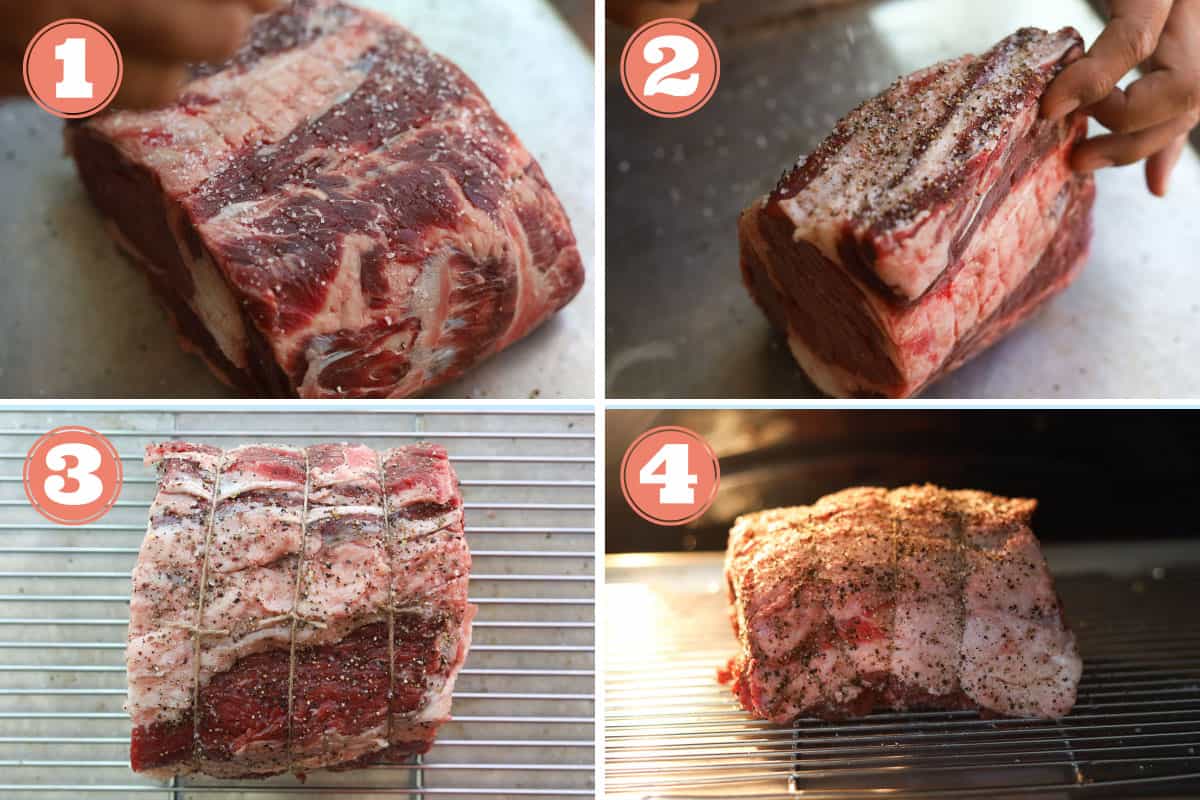
Prep the roast:
- Remove the roast from the refrigerator and let it sit at room temperature for at least 3 hours so it is not cold in the center.
Preheat oven:
- 30 minutes before roasting, preheat the oven to 500°F. While the oven may reach 500°F quickly, wait the full 30 minutes to ensure it is thoroughly heated.
Season and tie:
- Season the roast generously on all sides with coarse kosher salt and cracked pepper.
- Use kitchen twine to tie the roast, ensuring it has a uniform shape for even cooking.
Roasting
- Place the roast on a baking rack set inside a roasting pan, with the fat side up.
- Position the pan on the middle rack of the preheated oven.
- Shut the oven door and set your timer for the active roasting time (calculated using the 500°F rule: roast weight × 5 minutes).
Turn Oven OFF - No peeking:
- When the timer goes off, turn off the oven. Set another timer for 2 hours.
- Do not open the oven door during this time. Place a visible sign or sticky note on the oven as a reminder not to peek.
Serve:
- After 2 hours, remove the roast from the oven, slice, and serve immediately. Pair it with au jus sauce and horseradish for the perfect accompaniment.
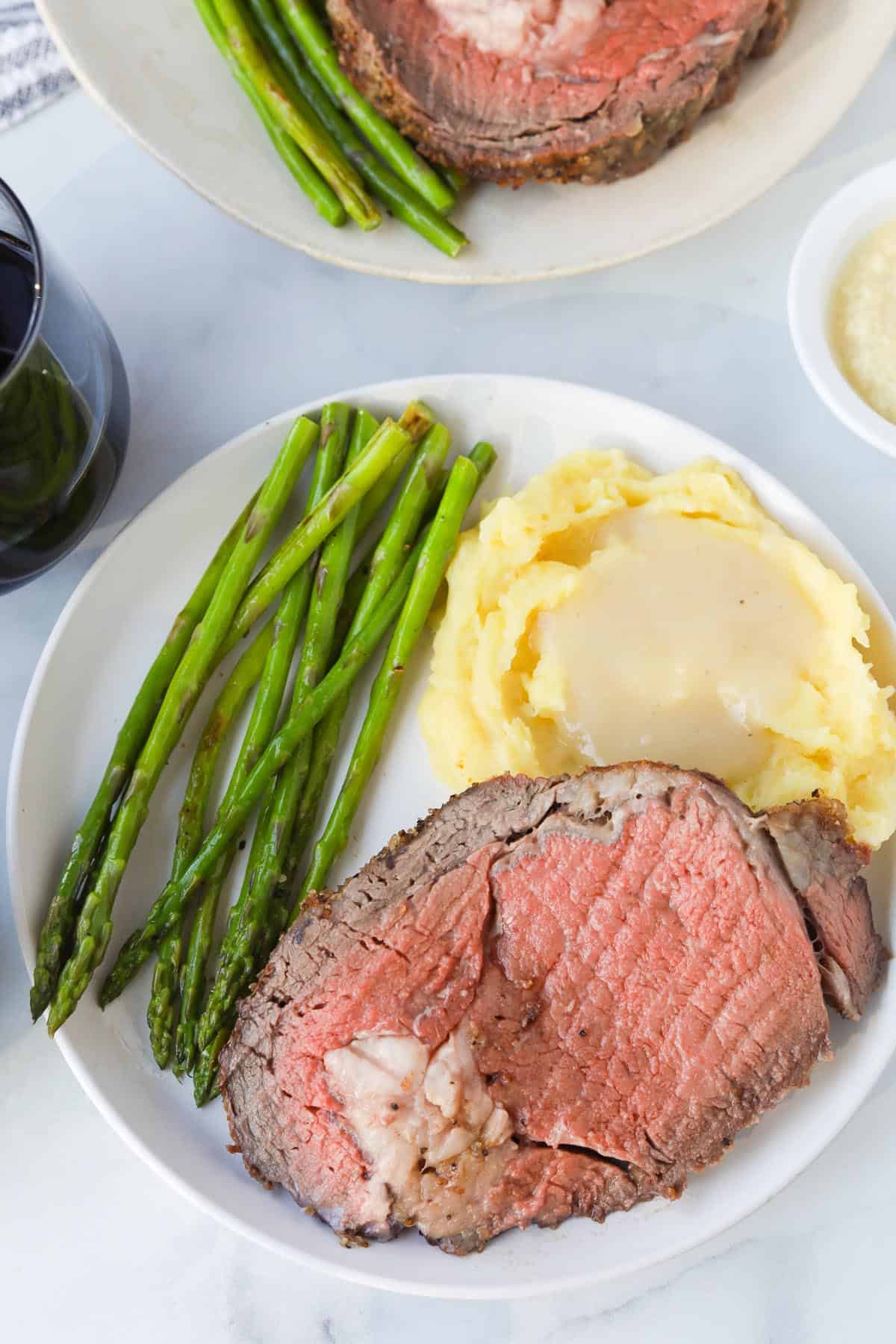
Rib Roast Doneness & Temperature Guide
Use an instant‑read thermometer to ensure accuracy, insert it into the thickest center of the roast.
Tips for a perfectly cooked small prime rib
- Use a Kitchen Scale: Accurately weigh your prime rib roast to calculate the correct cooking time using the 500°F Prime Rib Rule.
- Bring the Roast to Room Temperature: Make sure your roast is close to room temperature before cooking. A cold roast will cook unevenly, resulting in parts of the meat being too rare.
- Tie the Roast: Tying the roast with kitchen twine ensures even cooking and helps the roast maintain a uniform shape. This results in evenly cooked, round slices. Since one end of the roast may be smaller than the other, tying it creates an even circumference for better cooking.
- No Pan Drippings: This method does not produce pan drippings. Try this au jus with beef broth recipe to serve with the roast.
- Ventilate Your Kitchen: This method can cause some smoke, so make sure your windows are open and fans are running to avoid setting off the smoke alarm.
What to serve with a small rib roast
The prime rib is the star of the table, serve it alongside some delicious holiday classics like garlic red mashed potatoes, Green bean casserole with cream of chicken or Scalloped potatoes!
Frequently Asked Questions
Yes, but with adjustments. For larger roasts:
Ensure the roast is boneless.
Cut the roast evenly in half to create two smaller roasts.
Calculate the roasting time based on one rib roast.
Use an Instant-Read Thermometer. Insert the thermometer into the deepest part of the meat to check the internal temperature accurately.
If your roast is undercooked or some guests prefer a more well-done portion, here are a few solutions:
Put the Whole Roast Back in the Oven -If the entire roast is undercooked, return it to the oven at 300°F (150°C). Cook in 10-minute intervals, checking the internal temperature frequently until it reaches your preferred doneness.
Slice and recook.If time is limited, slice the roast into individual portions.
Place the slices in the oven at 350°F (175°C) for about 10-15 minutes (depending on thickness) or until they reach the desired doneness.
Thinner slices cook faster, so adjust the thickness based on your serving timeline.
Quick Sear: For guests who prefer their portion medium-well to well-done: Heat a skillet with oil or butter on medium-high heat. Add individual slices to the pan and sear for 1-2 minutes per side until they’re cooked to your liking.
Reheat in sauce: Heat au jus or gravy in a pan until warm. Add slices of meat to the sauce and simmer for 30 seconds or until they reach the desired doneness.
Prime rib roast should be cut into ½ - ¾“ slices.
More Holiday recipes to try
Love a recipe you've tried? Please leave a 5-star 🌟rating in the recipe card and a comment below! That'll make my day!
Let's be friends! Follow me on social media @ Instagram, Pinterest. Give me a tag @apeachyplate when you try out a recipe!
Prime Rib 500 Rule Recipe: Perfect for Small Roasts
Ingredients
- 4 pound Boneless rib roast
- Kosher salt, to taste
- Cracked pepper, to taste
Instructions
- Set the roast out at room temperature 3 hours prior to roasting.
- 30 minutes prior to roasting, Preheat the oven to 500 degrees.
- Calculate roasting time: to determine the "active" roasting time (the time you'll roast the meat at 500°F), simply multiply the weight of your roast (in pounds) by 5 minutes.For example:A 4-pound roast: 4 × 5 = 20 minutesA 4.5-pound roast: 4.5 × 5 = 22.5 minutes (round up to 23 minutes).
- Tie the roast with twine, making sure it’s a uniform circumference.
- Generously season all sides of the roast with kosher salt and pepper.
- Place the roast on the roasting pan with a rack, fat side up. After 30 minutes of preheating the oven, place the pan on the middle rack. Shut the door and set your time for the active roasting time. Set a timer!
- When the timer goes off, turn off the oven. Set your timer for 2 hours and walk away! Do NOT open the oven door!
- Once the 2 hours is up, cut and serve right away.
Notes
- This closed oven method is recommended for:
- Small boneless rib roasts between 4 to 7 pounds.
- Ovens with NO cooling fans - this is very important. If your oven has an internal cooling fan, it will quickly reduce the temperature inside the oven, decreasing the active roasting period.
- For medium rare roasts
- Make sure your roast is at room temperature prior to cooking. A cold roast will cook unevenly and result in rare meat.
- Accurately weigh your prime rib roast to calculate the correct cooking time using the 500°F Prime Rib Rule.
- There’s no need for an additional resting period after removing the roast from the oven.
- Use the meat thermometer by inserting it into the deepest part of the meat. For medium rare the temperature should read 125 - 130 degrees Fahrenheit.
- For rib roasts bigger than 7 lbs,
- Cut the roast evenly in half to create two smaller roasts.
- Calculate the roasting time based on one rib roast.


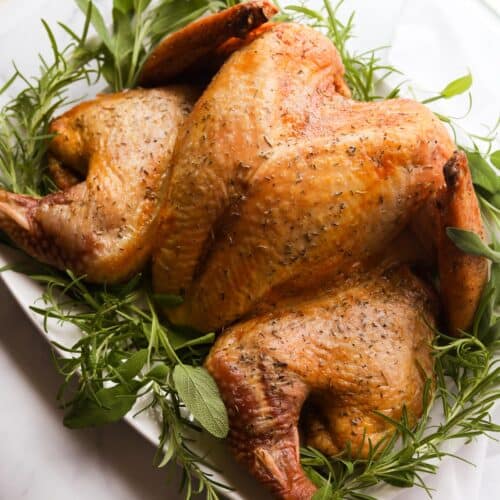
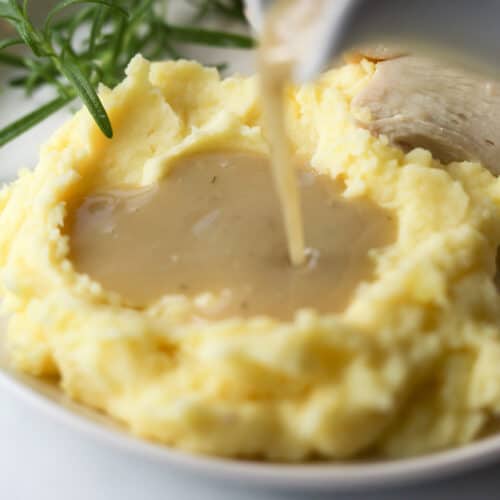
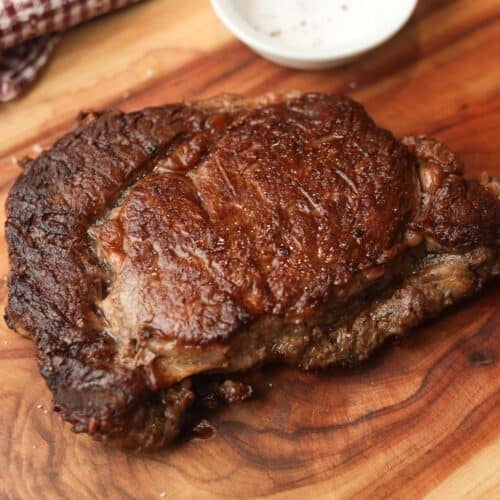
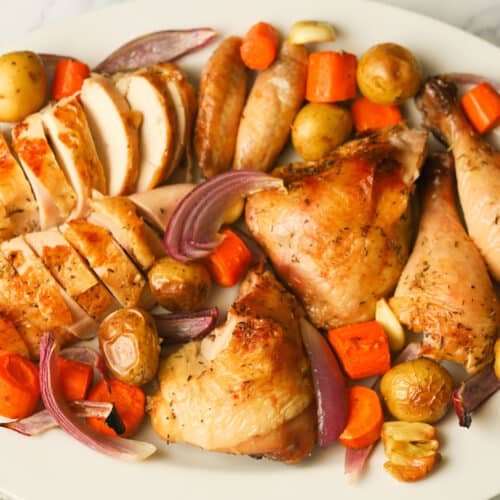
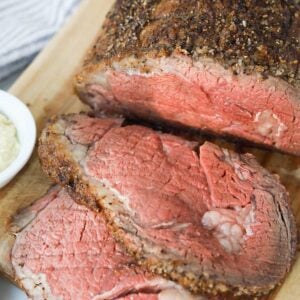
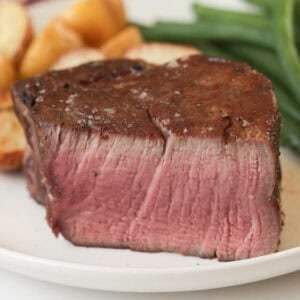

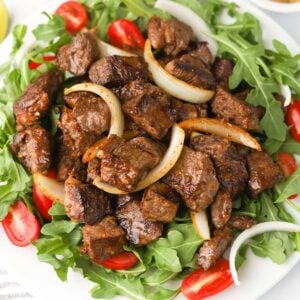
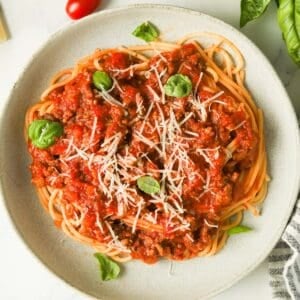
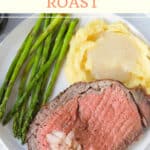
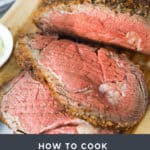
Tandra Castro
I read instructions but do you cover roast or leave it open/uncovered while roasting at 500 ? Thank you
Kaylie
uncovered
Jodi Ann Kubek
Exactly what I was looking for and needed for this years Christmas dinner.
Kaydi
I love this recipe the closed oven method is the best way to cook a prime rib roast comes out perfect every time
Gregg D
Simplest fool-proof way to cook a rib roast.
Kaylie
It truly is!
Kerry Lowery
will this method work for a 3.14 lb roast?
Kaylie
Yes, the method will still work, but because the roast is smaller, you may not get the same kind of sear on the outside as you would with a larger roast. With a shorter cooking time and smaller roast time, your roast may be more medium to medium-well on the edges, and more medium instead of medium-rare in the center. Another factor is your oven, and how much heat it retains over time. The good news is you can always cook the roast more if it's too rare.